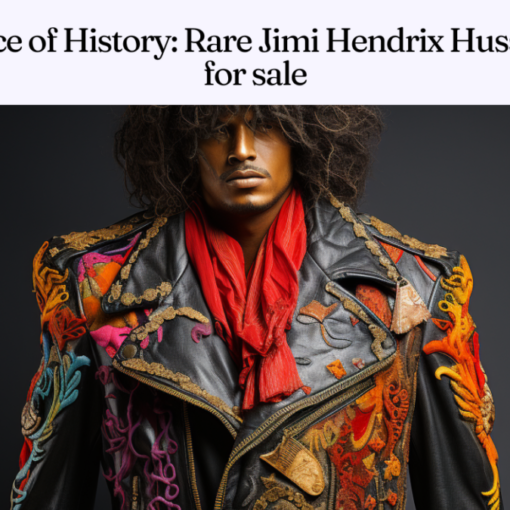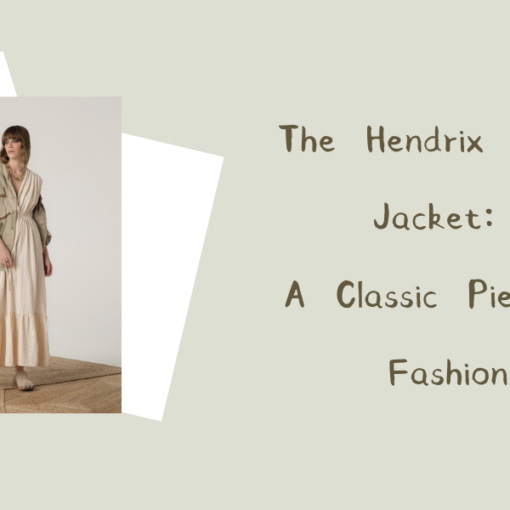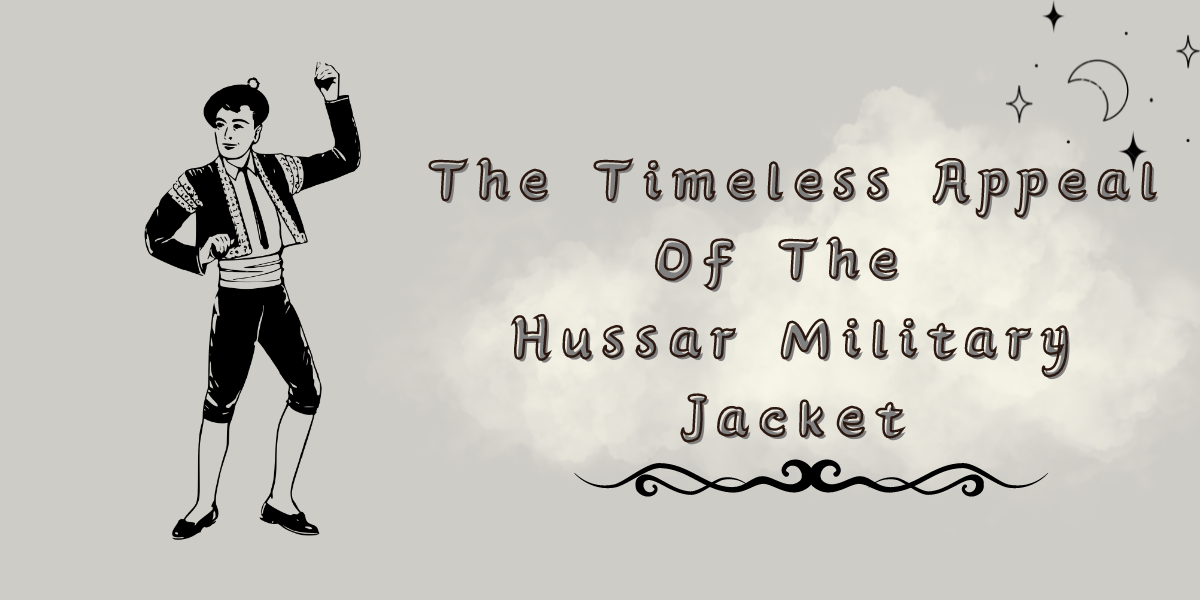The Hussar Pelisse jacket with patterns is a distinctive and iconic garment that has captivated fashion enthusiasts for centuries. Its rich history, timeless design, and exquisite construction make it a cherished piece of outerwear that continues to inspire modern fashion trends. This article delves into the captivating world of the Hussar Pelisse jacket, exploring its origins, popularity, design and more.
What is the hussar pelisse jacket with pattern
The Hussar Pelisse jackets with patterns exemplifies a military-derived outerwear garment that originated in Europe during the 18th century. Its genesis can be traced back to the distinguished Hungarian Hussar cavalry, celebrated for their chivalry and resplendent ensembles. This exceptional jacket boasts a discernible silhouette, frequently bedecked with elaborate patterns, ornate braids, and opulent embellishments. Crafted from sumptuous textiles such as wool or velvet, the Pelisse jacket harmoniously fuses sophistication and practicality, rendering it an exquisite attire choice for both ceremonial affairs and sartorially conscious everyday wear.
History of the Hussar Pelisse jacket
The origins of the Hussar Pelisse jacket can be traced back to the 18th century, where it gained prominence among the Hungarian Hussar cavalry. These skilled horsemen were renowned for their expertise in combat and their striking uniforms, which included the iconic Pelisse jacket. The jacket was initially designed to provide warmth and protection during battles, with its length and thick fabric shielding the wearer from harsh weather conditions.
Over time, the Hussar Pelisse jacket became a symbol of status and prestige, representing the courage and valor of the Hungarian Hussars. The jacket’s intricate designs and embellishments showcased the wealth and rank of its wearer, while its distinctive silhouette and bold colors added a touch of theatricality to the overall appearance.
Popularity of the Hussar Pelisse jacket
The appeal of the Hussar Pelisse jacket surpassed its initial military context, captivating the discerning tastes of non-military circles. Its majestic and captivating design garnered the admiration of aristocrats, nobility, and the elite strata of society. The jacket’s association with courage and valor heightened its allure, as individuals aspired to embody the esteemed and gallant image embodied by the Hungarian Hussars.
During the 19th century, the influence of the Hussar Pelisse jacket transcended continental boundaries, extending its reach to distant lands like Russia, where it became an integral component of the traditional Cossack uniform. Its integration into various military and ceremonial ensembles worldwide further solidified its position as an emblematic embodiment of sartorial excellence.
Design of the Hussar Pelisse jacket with patterns
The design of the Hussar Pelisse jacket is a testament to the exquisite craftsmanship and attention to detail that went into creating this iconic garment. From its silhouette to its intricate embellishments, every aspect of the jacket’s design contributes to its distinctive and visually striking appearance.
- Silhouette and patterns
The Hussar Pelisse jacket boasts a tailored silhouette that accentuates and flatters the wearer’s form. Its construction typically incorporates a slender waistline that gently flares out at the hips, yielding a graceful and refined contour. This meticulously tailored fit not only enhances the jacket’s aesthetic appeal but also ensures unhindered mobility — a crucial attribute for cavalry troops mounted on horses.
The Hussar Pelisse jacket also typically features elaborate patterns and embellishments. Traditional patterns include intricate geometric designs, floral motifs, and military-inspired elements like braids and tassels. These patterns can be woven into the fabric or added as decorative elements through embroidery or appliqué. The patterns should be visually striking and reflect the opulence and grandeur associated with hussar uniforms.
- Collar and Lapels
Among the prominent design elements adorning the Hussar Pelisse jacket, the elevated collar reigns supreme. Crafted from contrasting fabrics or embellished with intricate braiding, the collar bestows an opulent touch upon the jacket. Its heightened placement not only confers additional protection from the elements but also imparts an aura of authority and distinction to the wearer.
The lapels of the jacket, extending gracefully from the collar to the waist, command due attention. Embellished with ornate braiding, decorative buttons, and other meticulous adornments, the lapels harmonize functionality and ornamentation. They serve to shield and enhance, offering an additional layer of protection while simultaneously enriching the jacket’s visual allure.
- Braiding and Decorative Details
The Hussar Pelisse jacket undoubtedly captivates with its resplendent braiding, meticulously woven into intricate patterns. This embellishment serves as a visual spectacle, exuding a captivating allure that is both symbolic and mesmerizing. The range of patterns is diverse, encompassing geometric designs, motifs inspired by nature, mythology, and evocative military symbolism.
Typically crafted from lustrous gold or silver thread, the braiding bestows an air of opulence upon the jacket. Every strand is carefully hand-sewn onto the fabric, requiring an exceptional degree of skill and precision. The braiding not only elevates the jacket’s overall aesthetic but also functions as a tangible symbol of the wearer’s rank, unit, or distinguished achievements.
Supplementary to braiding, the jacket may feature an array of decorative details, including buttons adorned with intricate designs, cascading tassels, and meticulously crafted embroidery. These embellishments further augment the visual splendor of the jacket, elevating it to the status of an exquisite work of art.
- Fabrics and Colors
The selection of materials employed in the crafting of the Hussar Pelisse jacket is executed with utmost care, ensuring a seamless blend of comfort and durability. Luxurious fabrics, such as sumptuous wool, plush velvet, or resplendent brocade, are frequently employed, imparting a tactile opulence and an exquisite texture. These fine textiles not only provide resolute warmth and protection but also serve as a fitting canvas for the meticulous braiding and embellishments, seamlessly integrated with precision.
Regarding the color palette, the hues utilized in the Hussar Pelisse jacket vary, influenced by the specific hussar unit or the personal preferences of the wearer. Traditional shades may encompass deep blues, opulent reds, or vibrant greens, harmoniously complemented by the gleaming accents of gold or silver braiding. These captivating color combinations serve to bestow upon the jacket an air of regality and captivating visual allure.
Conclusion
The Hussar Pelisse jacket with patterns is a timeless and captivating piece of outerwear that has withstood the test of time. From its origins as a military garment to its prominent place in high society and fashion, this iconic jacket continues to be admired for its regal design and exquisite craftsmanship. The combination of intricate patterns, luxurious fabrics, and meticulous construction sets the Hussar Pelisse jacket apart, making it a coveted symbol of style, elegance, and historical allure.
FAQs
Is the Hussar Pelisse jacket suitable for modern fashion trends?
Absolutely! The Hussar Pelisse jacket has a timeless appeal that transcends fashion trends. It can be seamlessly incorporated into both formal and casual outfits, adding a touch of sophistication and elegance.
What are some modern variations of the Hussar Pelisse jacket?
In modern times, designers have embraced the classic elements of the Hussar Pelisse jacket and incorporated them into contemporary designs. Some variations include cropped lengths, updated patterns, and the use of alternative fabrics.
Where can one purchase an authentic Hussar Pelisse jacket?
Authentic Hussar Pelisse jackets can often be found at specialty vintage stores, historical reenactment events, or through custom tailors specializing in period-inspired garments.




